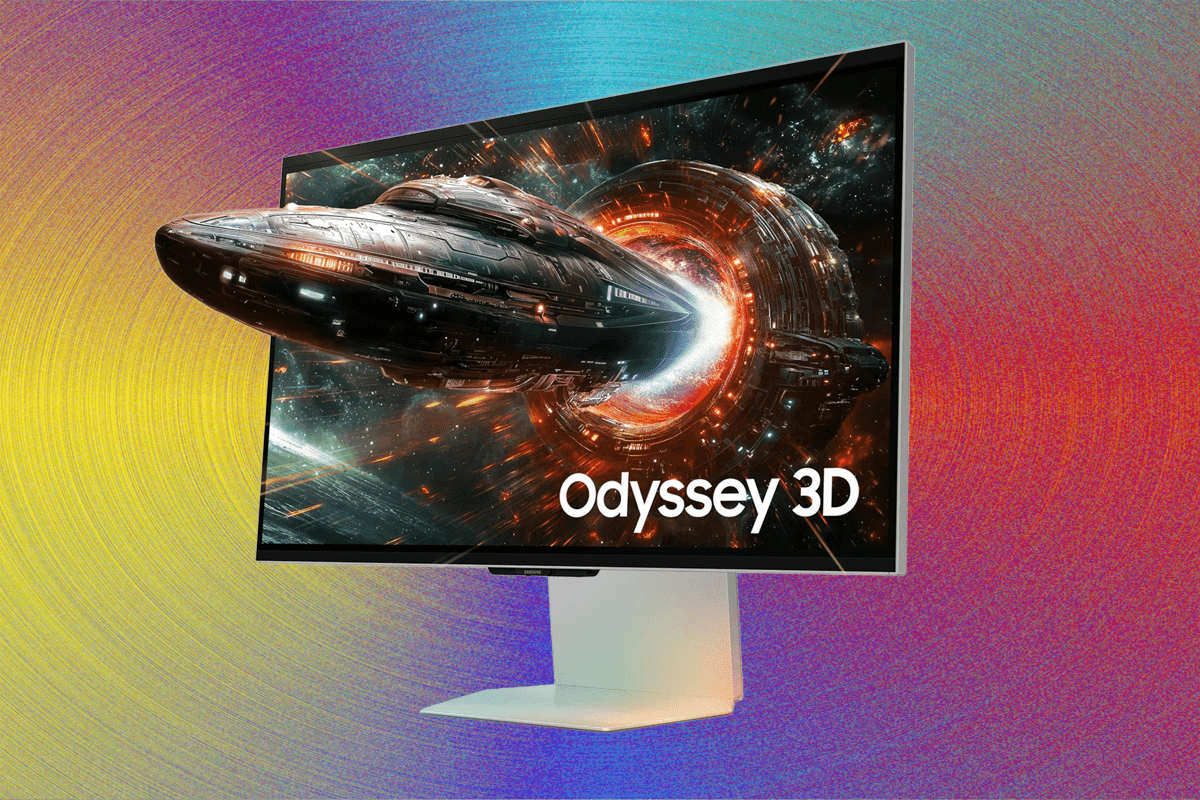All products featured on WIRED are independently selected by our editors. However, we may receive compensation from retailers and/or from purchases of products through these links.
If there’s one thing that turns people off from adopting new tech, it’s being forced to look silly and feel uncomfortable for extended lengths of time. It was always the Achilles’ heel for 3D in the past, and it remains the primary hurdle for VR headsets and goofy-looking smart glasses.
But there’s a new wave of 3D coming. Laptops, tablets, and even computer monitors have started embracing a new form of 3D technology that solves this problem entirely, without giving up just how compelling 3D can look. I’ve used the latest iteration of the technology and spoke with the creators—this might finally be the version of 3D that sticks.
The Final Frontier
I was skeptical when I first saw this next generation of 3D technology. Interest in 3D comes in waves. It led Avatar to become the highest-grossing film of all time. Five years later, it became the butt of a joke. But this new wave of 3D products isn’t just a rehash of past failed attempts. There’s a new technology bringing this trend to life, and it’s what makes this new era of 3D so compelling.
The creators of this technology have been watching the momentum build. “Today, we’re at hopefully the inflection point,” says David Fattal, cofounder and chief technology officer of Leia Inc. Founded as a spinoff of HP Labs over a decade ago, the company has been responsible for nearly all of the 3D implementations in gadgets over the last several years. That includes its first project, the failed Red Hydrogen One smartphone in 2018, as well as its own hardware projects like the Lume Pad 2 Android tablet in 2023.
[optimized 3D viewing screenshot]
When I first saw the Acer SpatialLabs gaming monitors a few years ago (powered by Leia’s tech), I knew the glasses-free experience had a certain magic to it. Despite my initial doubts, I was impressed by the strength of the 3D effect and the large “sweet spot.” Here I am today, with a full-fledged 3D monitor on my desk, the Samsung Odyssey 3D: It finally feels like 3D screens are coming to fruition.
Regardless of the device, every system that integrates Leia’s solution uses a combination of eye-tracking cameras and lenticular lenses to create the feeling of 3D. This is combined with a switchable optical layer in front of the display, allowing you to switch between 3D and 2D. It works really well, partly because the monitor is stationary—Leia uses AI to predict your movements ahead of time, to avoid breaking the effect.
“We have a history of where your face has been in the past few seconds before the current moment,” Fattal says. “Then we use AI to predict where you’re going to be in the future. There are only that many movements your face is doing, since your facial landmarks are correlated. If you turn your head, your eyes are supposed to follow in a certain way, and so on.”
The result feels magical. Like trying on a VR headset for the first time, seeing the 3D effect in full force without glasses feels significant, especially when matched with the right content.
Gaming Is Ripe for 3D
Photograph: Luke Larsen
You might wonder why gaming monitors and gaming laptops are becoming the go-to products for bringing 3D technology to the world, instead of TVs. Acer has been adding support for 3D games for years now, and it shows how much progress is possible on that front. Lenovo is even launching a brand-new gaming laptop, the Legion 9i, that offers an option to upgrade to a 3D screen as one of its premium features. Modern games are inherently 3D, making them a natural place to apply the 3D effect. But there’s more to this trend.
“We feel like this is the start of the next big thing.” That’s what David You, head of product marketing for monitors at Samsung, tells me when I asked how it felt to launch the company’s first 3D gaming monitor. “It reminds me of when Samsung first launched its 49-inch ultrawide monitors a couple of years ago. Everyone said, ‘Do we really need this?’ Now everyone has one on their desk.”
We’ve seen a vast expansion in gaming monitor technology over the past five years, successfully introducing adventurous screen sizes, aspect ratios, and display technology. There’s something for everyone, and that variability is one big reason why gaming monitors are the perfect place to start getting this technology in people’s faces.
Courtesy of Samsung
Samsung says it performed an internal survey among what it calls its “hardcore gaming” demographic to find out what they wanted in a next-generation gaming display. This demographic is marked by a willingness to pay thousands for the latest PC gaming gear. Sixty-two percent said they expected the next generation to include advanced immersion—the perfect place to test the waters with 3D tech.
“As we’re looking at the demographic, or just the overall consumer base for monitors, especially when you’re talking about premium monitors over $1,000, the overwhelming majority is spending it on gaming,” You says. That’s important because these first 3D gaming monitors don’t come cheap. Despite the surprisingly limited game support at launch, the Samsung Odyssey 3D costs a cool $2,000.
Samsung
Odyssey 3D (27-Inch, G90XF)
“We’re in that early adopter stage, right? The sticker price is a little bit of a shock to most consumers,” he says. “But we feel like once we get people into the 3D ecosystem, we’ll get more game studios and developers brought into it because they see the total accessible market increasing.”
When it comes down to it, gamers are willing to spend more on an immersive experience, and that’s going to buy time for the rest of the 3D ecosystem to catch up.
3D on Every Screen
[maybe a screenshot from this video or a full embed of the Lume Pad 2 video]
As You notes, even the Odyssey 3D is “so much more than just a 3D gaming monitor.” Whether it’s YouTube, Zoom, or even just full-screen photos, the display can convert 2D into 3D using machine-learning algorithms, adding an artificial layer of depth that wasn’t previously there. While the effect is not as convincing as in games, and DRM limitations restrict the content, it’s an impressive tech demo nonetheless. More than that, AI is enabling 3D to overcome the need for tailor-made 3D content, another one of the main problems with 3D tech in the past. It’s planting the seeds for broader uses that a more mainstream audience can benefit from.
Fattal says gaming is his second-favorite use case for 3D. “3D has that power to convey the human connection a lot better than on a flat screen,” he says, explaining that taking 3D photos and videos of his kids was what made him truly believe in the power of 3D. His dream is a world in which all videos can be taken and experienced in 3D. “Our goal is to end up completely standard on all devices, but especially on cell phones, so that people can chat and take pictures and videos, and share on social media—and all of that should be in 3D.”
It’s an ambitious aspiration, and one echoed by Silicon Valley titans. Apple and Google have been touting spatial photos and videos with their respective mixed-reality ecosystems, where you’ll be able to experience memories with depth. Google also recently showed off Google Beam—a way to convert people in video calls to appear more 3D and lifelike for a more personal touch.
The Apple Vision Pro could never exist without gamers willing to try out the early versions of VR, even with the severe lack of game libraries and uncomfortable headsets. There have always been other use cases for VR, but gaming has always been the main draw. It’s too early to say whether this new era of 3D will have more success going beyond gaming than VR has.
Don’t expect 3D TVs to make a comeback anytime soon—the current implementation makes it so that the 3D tech only works for one person. But for now, companies like Samsung have much brighter hopes for the proliferation of 3D, promising to “triple down” on its 3D monitor lineup in the next year or two. That’s a serious vote of confidence.



